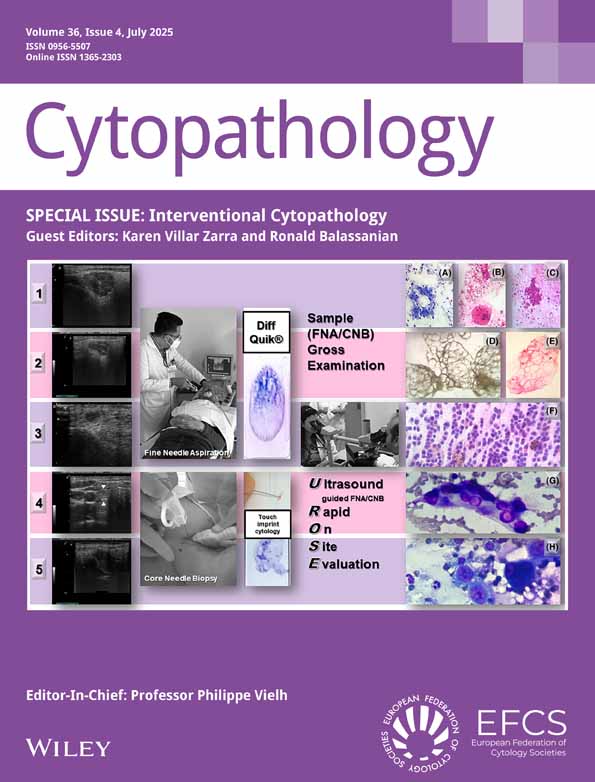Assessment of cell proliferation by Ki-67 staining and flow cytometry in fine needle aspirates (FNAs) of reactive lymphadenitis and non-Hodgkin's lymphomas
Assessment of cell proliferation by Ki-67 staining and flow cytometry in fine needle aspirates (FNAs) of reactive lymphadenitis and non-Hodgkin's lymphomas
This study was undertaken to assess cell proliferation in FNAs from a series of 57 non-Hodgkin's lymphomas (NHL) and 11 cases of reactive lymphadenitis using Ki-67 staining and flow cytometry (FCM). The results were compared and correlated to the cytomorphological subgrouping according to Kiel classification. The mean percentages of Ki-67 positivity were 16.6% and 61.1% for low and high grade lymphomas, respectively (P < 0.001). The mean S-phase fraction (SPF) determined by FCM was 4.6% for low grade and 12.9% for high grade lymphomas (P < 0.001). The figures for Ki-67 positivity and S-phase fraction in reactive lymphadenitis were 16.8% and 4%, respectively. We observed a strong correlation in low grade lymphomas between Ki-67 and SPF. A good correlation was also found in reactive lymphadenitis. In high grade lymphomas, however, with highly scattered Ki-67 and S-phase values, this correlation was lost. In some cases this discrepancy can be explained by a rich admixture of non-neoplastic, non-proliferating cells in aspirates from diploid tumours. In addition, the existence of a minor aneuploid tumour cell population of high proliferation such as that in Ki-1 lymphomas will not be accurately analysed by FCM but is easily assessed by Ki-67 staining. However, the main reason seems to be a high variability between the fraction of cells in S-phase and the total number of cells in G1, S and G2 in individual tumours.




